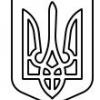The legendary Scandinavian kings
-
Последна активност
-
Руско-украинската война 2022-2024 година. 1 2 3 4 190
От Р. Теодосиев, in Руско-украинската война 2022 година.
- 4748 мнения
- 367049 прегледa
-
- 0 мнения
- 11 прегледa
-
- 768 мнения
- 256859 прегледa
-
- 2744 мнения
- 248918 прегледa
-
ПостИстина - що е то и един синтезен обход по психологическите и социалните му аспекти. 1 2 3
От ramus, in Психология и Логика
- 57 мнения
- 859 прегледa
-
-
Последно разглеждащи 0 Потребители
- No registered users viewing this page.



Препръчано мнение
Напиши мнение
Може да публикувате сега и да се регистрирате по-късно. Ако вече имате акаунт, влезте от ТУК , за да публикувате.